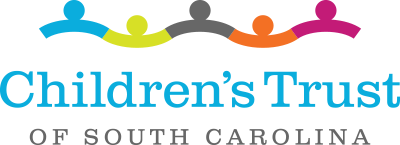The Joint Citizens and Legislative Committee on Children holds public hearings across South Carolina every fall to hear about issues affecting children and families. This year, several speakers highlighted the need for continued investment in prevention.

Dr. Mary Fran Crosswell
Here, we want to share Dr. Mary Fran Crosswell’s testimony she gave in Spartanburg on Sept. 24. She is a child abuse pediatrician at Prisma Health in Greenville and chair of the State Child Fatality Advisory Committee.
“Many of you are familiar with the State Child Fatality Advisory Committee but some may not be. The State Child Fatality Advisory Committee was enacted in 1993. S.C. Code mandates that the State Child Fatality Advisory Committee review completed investigations of deaths involving children aged 17 years and younger that are unexpected, unexplained, suspicious or criminal in nature.
As the new chair of the South Carolina State Child Fatality Advisory Committee, I would like to share the topline findings of our 2023 Annual Report with you. This report is a solemn reminder of the challenges we face in preventing child deaths and a call to action for all of us committed to the safety and well-being of our children.
In the past year, our committee reviewed 478 cases of child fatalities involving deaths that occurred between 2019 and 2023. Our mission is simple but urgent: to understand how and why our children are dying and to find ways to prevent future tragedies.
Let me first highlight the key findings:
Of the cases reviewed, 31% were accidental deaths. The most frequent causes included asphyxia, often tied to unsafe sleep environments for infants. A staggering 47% of the asphyxia cases involved infants who were co-sleeping with adults.
We also saw the deadly impact of fentanyl on our youth. Among the accidental overdose deaths, 74% involved fentanyl, with teenagers being the most affected group. Many of these teens had prior contact with substance abuse services or social services, showing that our system must do more to support at-risk youth.
Turning to homicides, 19% of the deaths we reviewed fell into this category. The vast majority of these cases involved gun violence, with young black males being disproportionately affected.
Suicide remains another devastating cause of death. Nine percent of the fatalities we reviewed were suicides, with gunshots being the most common method. We know that suicide is preventable, and our efforts must focus on mental health support and outreach, particularly to teenagers.
One of the most important areas of focus for the committee this year has been on infant sleep-related deaths. These fatalities represent a significant portion of both accidental and undetermined deaths. Unsafe sleeping environments—whether it’s co-sleeping, improper bedding, or the absence of a safe sleep surface—contributed to far too many losses. We must do more to educate caregivers on safe sleep practices and provide resources to ensure every infant has a safe place to rest.
We also reviewed 81 motor vehicle deaths, with two major trends emerging. First, too many young children involved in fatal crashes were unrestrained. Second, our teenage drivers continue to face significant risks, especially related to distracted driving, speeding and failure to use seatbelts. This is an area where we must improve public education and reinforce the importance of safety measures, such as seatbelt use and safe driving practices.
So, where do we go from here? What can we do to stop these preventable deaths? Our committee has several key recommendations.
First, we must support voluntary, evidence-based home visiting programs to educate new parents on safe sleep and child safety.
Second, we must strengthen our campaigns around motor vehicle safety, substance abuse prevention and mental health awareness. Initiatives like the “Buckle Up, Buttercup” campaign and fentanyl awareness efforts are crucial to saving lives.
Finally, we need to improve collaboration and data sharing among agencies, particularly in areas like juvenile justice, education and health services to ensure we have the most accurate picture of the challenges facing our children.
This report is a call to action for all of us. Our children are depending on us to do better. Together, we can reduce preventable child deaths and create a safer future for South Carolina’s youngest citizens.
Thank you.”





